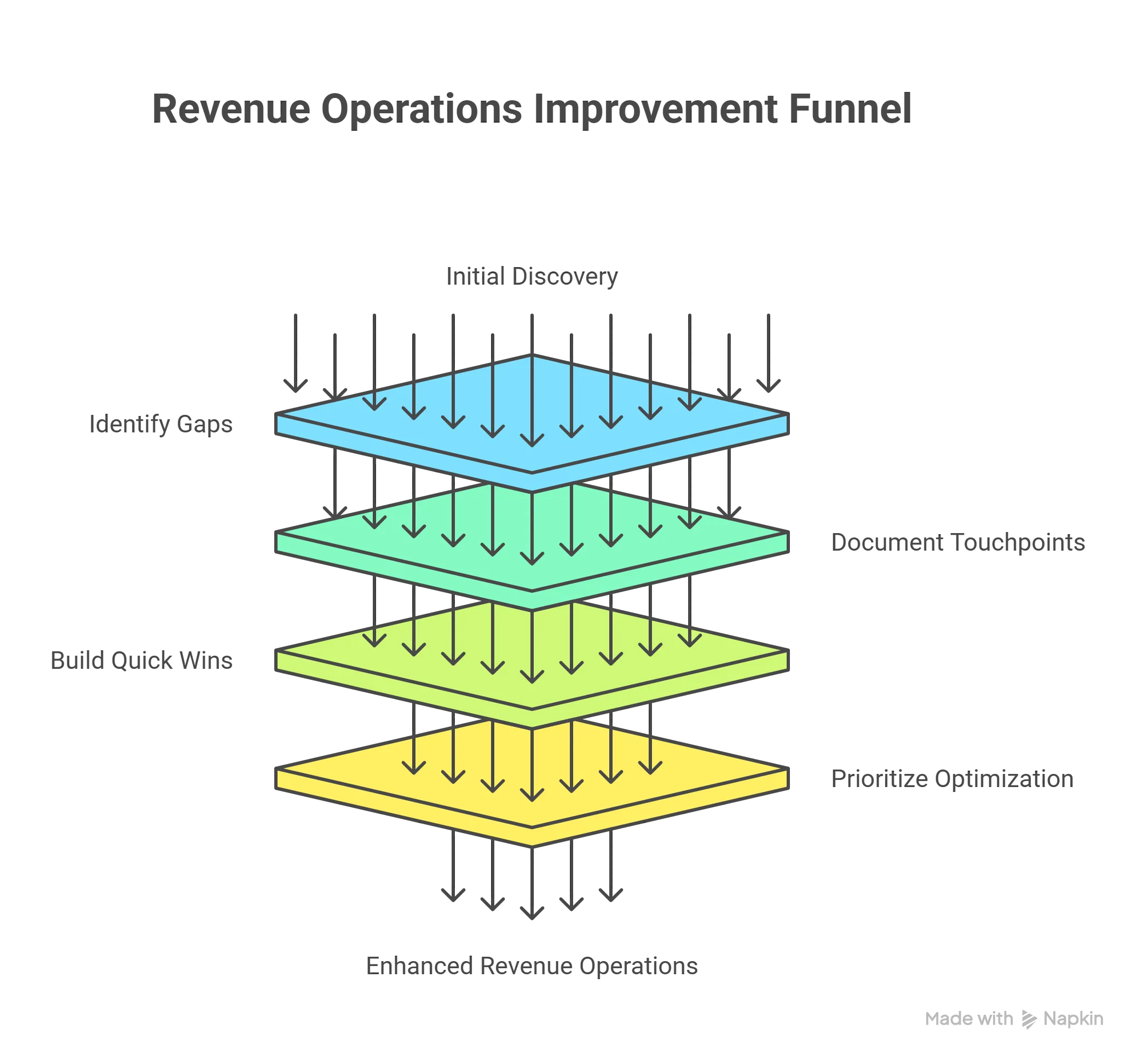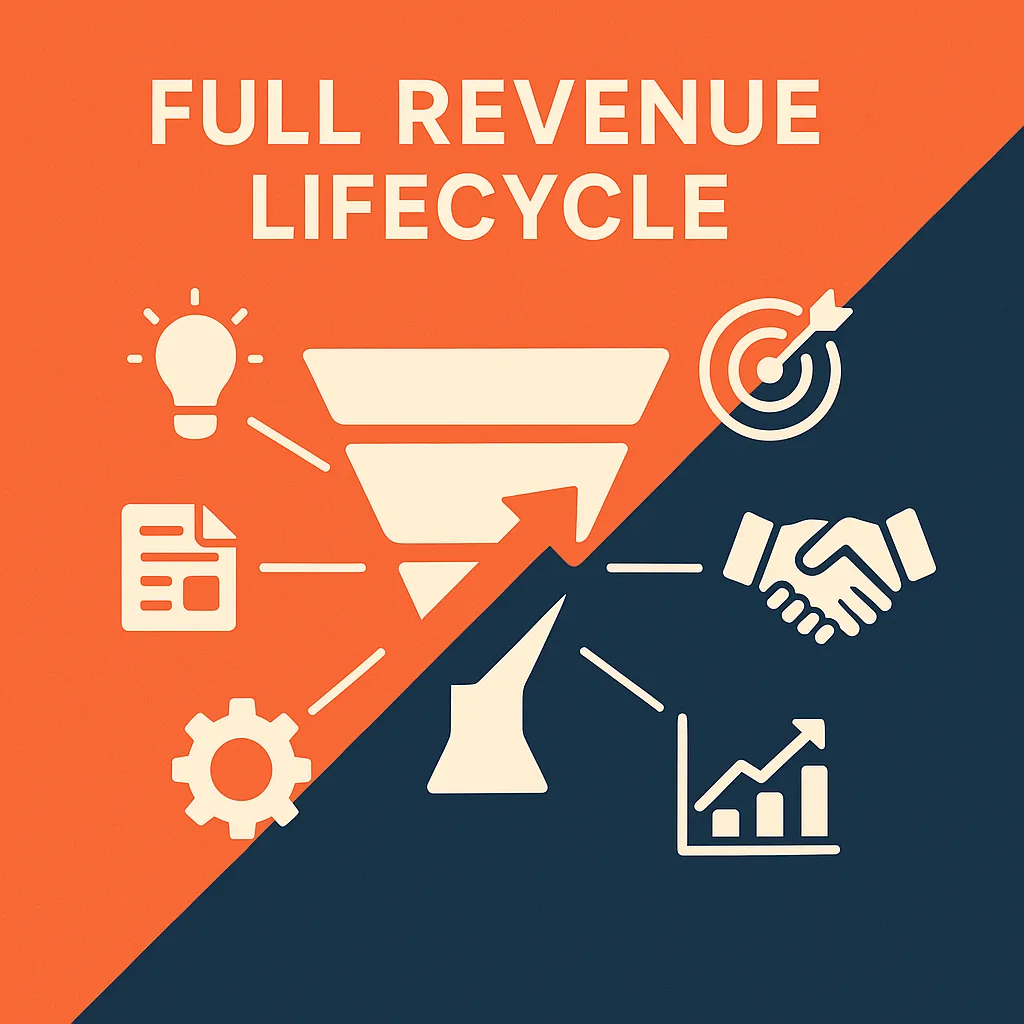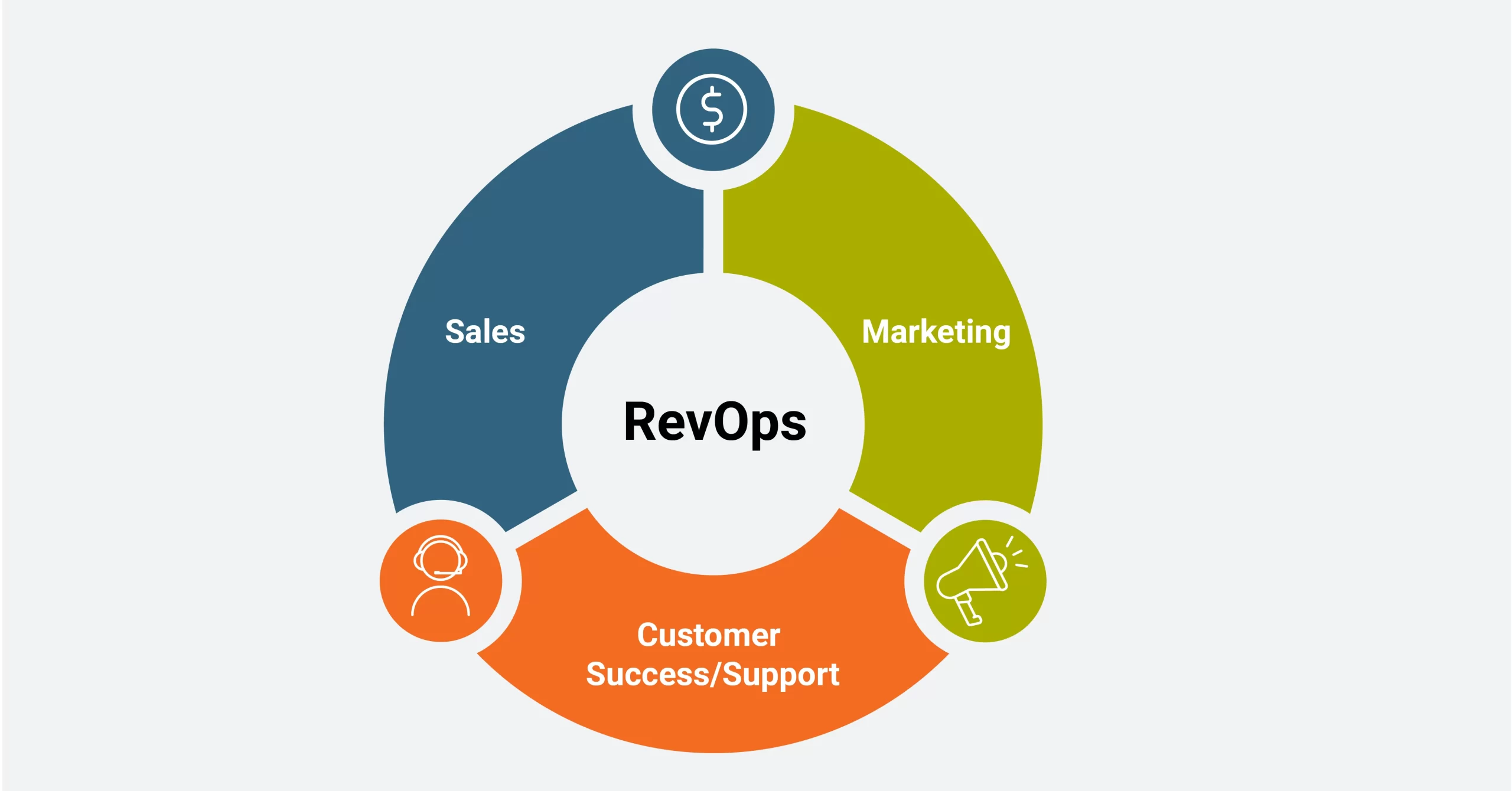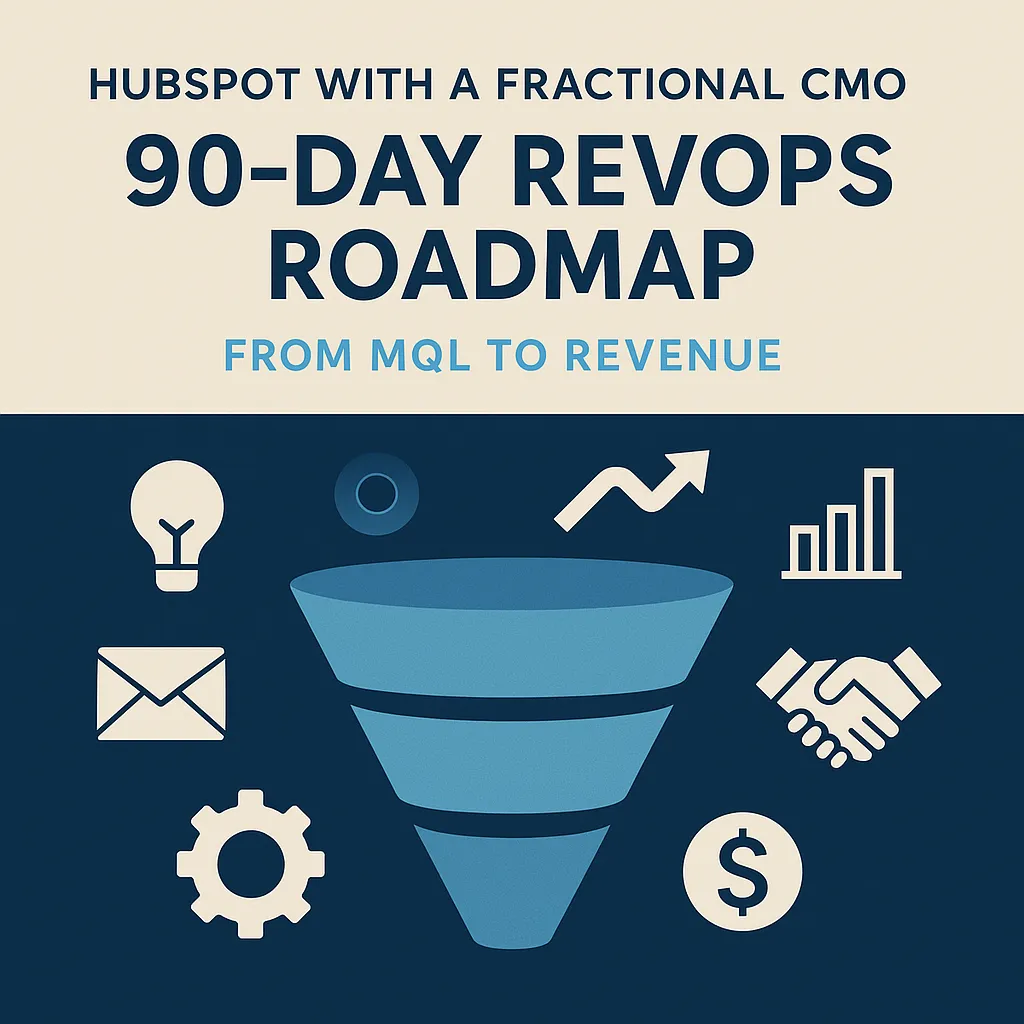Fractional CMO services deliver enterprise-level expertise at 40-60% cost savings compared to full-time executives, making them the optimal choice for executing a fractional cmo hubspot revops roadmap germany strategy.
After implementing dozens of HubSpot RevOps transformations, I’ve found that the first 90 days determine whether your revenue engine accelerates or stagnates.
This roadmap shows you exactly how to build automated workflows, align teams, and convert MQLs to revenue using proven frameworks that deliver measurable results within three months.
Contents
- 1 TL;DR
- 2 Map Your First 30 Days: Audit and Strategic Foundation
- 3 Transform Days 31-60: Build Your Revenue Engine
- 4 Scale Days 61-90: Automation and Optimization
- 5 Measure Impact Through Revenue Operations Metrics
- 6 Structure Your RevOps Team for Success
- 7 Navigate Common Implementation Challenges
- 8 Plan Beyond Day 90: Sustaining Momentum
- 8.1 Create Continuous Improvement Frameworks
- 8.2 Scale What Works, Kill What Doesn’t
- 8.3 FAQ
- 8.4 How quickly can a fractional CMO deliver measurable RevOps results?
- 8.5 What HubSpot features are essential for the 90-day roadmap?
- 8.6 How much should German Mittelstand companies budget for RevOps transformation?
- 8.7 What are the biggest risks during HubSpot RevOps implementation?
- 9 Sources
TL;DR
A fractional CMO transforms your HubSpot RevOps in 90 days through strategic audits, automated workflows, and aligned metrics. The structured approach delivers quick wins while building scalable processes that convert leads to revenue predictably.
- Smart lead scoring increases MQL-to-SQL conversion from 15% to 45%
- Automated workflows generate 320% more revenue than manual campaigns
- Aligned teams achieve 36% higher retention and 38% better win rates
Map Your First 30 Days: Audit and Strategic Foundation
Execute the Revenue Operations Audit
The first month establishes your baseline through comprehensive discovery. I start every engagement by examining existing HubSpot data quality, workflow efficiency, and team alignment gaps. Your revenue operations strategy begins with understanding current conversion rates, pipeline velocity, and attribution blind spots.
During this phase, I document every touchpoint in your buyer’s journey. Most B2B companies discover they’re tracking vanity metrics while missing critical revenue indicators. One client found their HubSpot CRM implementation captured only 40% of actual customer interactions, leading to flawed forecasting and missed opportunities.
Build Your Quick Win Strategy
Quick wins prove value and generate momentum for larger transformations. I identify three to five improvements that deliver results within weeks—typically fixing broken workflows, cleaning duplicate data, or implementing basic lead scoring. These victories create buy-in across teams while laying groundwork for sophisticated automation.
The audit reveals which processes need immediate attention versus long-term optimization. For Mittelstand digital marketing Germany companies, this often means addressing language-specific nurture sequences or regional compliance requirements before tackling global expansion strategies.

Transform Days 31-60: Build Your Revenue Engine
Design Intelligent Lead Scoring Models
Effective B2B lead nurturing requires sophisticated scoring that reflects actual buying behavior. I implement multi-dimensional models combining demographic fit, behavioral engagement, and intent signals. Smart HubSpot lead scoring can increase MQL to SQL conversion from the industry standard 15% to 45%.
Your scoring model should prioritize high-intent actions differently across buyer stages. Demo requests score higher than whitepaper downloads, while pricing page visits indicate purchase readiness. One fintech client’s behavior-based scoring delivered 28% faster qualification and 40% higher SQL quality by focusing on engagement patterns rather than arbitrary point thresholds.
Architect Marketing and Sales Alignment
Marketing and sales alignment requires shared definitions, transparent handoffs, and mutual accountability. I establish service-level agreements (SLAs) defining response times, follow-up sequences, and feedback loops. Teams using aligned processes generate 29% of pipeline through marketing influence versus 10% in misaligned organizations.
The HubSpot RevOps roadmap includes creating unified dashboards where both teams track shared metrics. Pipeline velocity, conversion rates by source, and revenue attribution become common language rather than departmental silos. This visibility transforms finger-pointing into collaborative problem-solving.
Configure Attribution and Reporting Infrastructure
Attribution modeling reveals which channels and campaigns drive revenue, not just leads. I implement multi-touch attribution in HubSpot that tracks every interaction from first touch to closed deal. This data informs budget allocation and campaign optimization decisions based on actual revenue impact.
Your 90-day go-to-market plan needs clear success metrics. I establish KPI hierarchies linking tactical metrics to strategic objectives—connecting email open rates to pipeline velocity to quarterly revenue targets. This framework ensures every team member understands how their activities contribute to growth.
Scale Days 61-90: Automation and Optimization
Deploy Advanced Workflow Automation
Sales pipeline optimization through automation transforms manual processes into scalable systems. Marketing automation users experience 320% more revenue from automated emails compared to manual campaigns. I build sophisticated workflows that respond to buyer signals in real-time, triggering personalized content, task creation, and multi-channel outreach.
Consider a software company that implemented HubSpot workflows triggering SMS follow-ups within five minutes of form submissions. They achieved 21x higher conversion than competitors waiting 30 minutes. Speed matters in B2B sales, and automation ensures no lead waits for human availability.
Launch Predictive Lead Nurturing Campaigns
Modern B2B lead nurturing combines behavioral triggers with predictive analytics. I design campaigns that adapt content and cadence based on engagement patterns, industry, and buying stage. Your nurture sequences should educate while qualifying, moving prospects through awareness to consideration naturally.
The key is segmentation depth. Generic nurture emails waste opportunity. I create micro-segments based on company size, technology stack, pain points, and engagement history. A manufacturing client’s segmented approach increased email engagement by 73% while reducing unsubscribes by half.
Optimize the Full Revenue Lifecycle
Revenue optimization extends beyond initial conversion. I implement post-sale workflows for onboarding, expansion opportunities, and renewal management. Your HubSpot CRM implementation should track customer health scores, usage patterns, and expansion signals to maximize lifetime value.
Cross-functional alignment becomes critical here. Customer success data feeds back into marketing for better targeting and sales for upsell opportunities. One SaaS client’s integrated approach increased net revenue retention by 24% within six months.

Measure Impact Through Revenue Operations Metrics
Track Pipeline Velocity and Conversion Metrics
Pipeline velocity measures how quickly deals move through stages, revealing bottlenecks and acceleration opportunities. I establish velocity benchmarks by segment, then identify patterns in faster-moving deals. Companies with tightly aligned teams achieve 36% higher retention and 38% better win rates through shared metric ownership.
Your dashboard should display real-time conversion rates between stages, average deal size trends, and time-in-stage analytics. These metrics inform coaching priorities and process improvements. When velocity slows, you can diagnose whether it’s a lead quality, sales execution, or competitive issue.
Monitor Customer Acquisition Cost and Payback Period
CAC efficiency determines sustainable growth potential. The median new customer CAC ratio reached $1.76 in 2024, up 14% from 2023, requiring precise channel optimization. I build attribution models that calculate true CAC by source, campaign, and segment, revealing where to double down versus divest.
Payback period directly impacts cash flow and growth capacity. Fractional CMO services help establish CAC payback targets by customer segment, then optimize acquisition strategies to hit those targets. A B2B services firm’s focus on CAC payback reduced their break-even point from 18 to 11 months.
Structure Your RevOps Team for Success
Define Roles and Responsibilities
Successful revenue operations requires clear ownership and accountability. I help structure teams with defined roles: a RevOps leader driving strategy, analysts managing data and reporting, and platform specialists optimizing HubSpot functionality. This structure prevents overlap while ensuring comprehensive coverage.
For smaller organizations, these might be partial roles or shared responsibilities. The key is explicit ownership—someone must own data quality, someone must own process documentation, and someone must own platform optimization. Ambiguity kills RevOps initiatives.
Establish Cross-Functional Collaboration Rhythms
Weekly revenue team meetings create alignment and accountability. I implement structured agendas covering pipeline review, conversion analysis, and blocker resolution. These sessions transform from status updates to working sessions where teams solve problems together.
Monthly strategic reviews examine trend data, test results, and market changes. Quarterly business reviews align RevOps initiatives with company objectives. This cadence ensures tactical execution supports strategic goals while maintaining flexibility for rapid adjustments.

Overcome Data Migration and Integration Hurdles
Full lead management implementation in HubSpot typically requires 60-90 days including data migration, workflow setup, and team onboarding. I’ve learned that running parallel systems during transition reduces risk while maintaining operations. A manufacturing firm completed migration in 75 days by maintaining dual systems during weeks three through five, then training teams before cutover.
Integration complexity often surprises teams. Your tech stack likely includes tools beyond HubSpot—accounting systems, customer support platforms, data warehouses. I map all integration points, prioritize based on business impact, and phase implementations to minimize disruption.
Address Change Management and Adoption
Technology implementation fails without user adoption. I develop training programs tailored to each team’s needs and technical comfort. Sales teams need different HubSpot training than marketers or customer success. Role-specific training accelerates proficiency and enthusiasm.
Change resistance emerges when benefits aren’t clear. I create “win stories” showcasing how new processes save time or increase commissions. When a sales rep closes deals faster using automated workflows, their success motivates peers. These organic champions drive adoption better than mandates.
Plan Beyond Day 90: Sustaining Momentum
Create Continuous Improvement Frameworks
The 90-day roadmap establishes foundation, but excellence requires ongoing optimization. I implement testing frameworks for continuous experimentation—A/B testing email sequences, multivariate testing landing pages, and iterating lead scoring models based on conversion data.
Your revenue engine should include feedback loops where sales insights inform marketing strategy and customer success data shapes acquisition targeting. This creates a learning organization that improves systematically rather than sporadically.
Scale What Works, Kill What Doesn’t
Data reveals which initiatives drive growth versus consume resources. I establish kill criteria for campaigns and processes—if something doesn’t meet predetermined success metrics within defined timeframes, we redirect resources to proven winners. This discipline prevents zombie initiatives that drain focus and budget.
Scaling requires documentation and systematization. I create playbooks for successful campaigns, templatize high-performing workflows, and establish standard operating procedures for routine tasks. This knowledge capture ensures consistency as teams grow and evolve.
FAQ
How quickly can a fractional CMO deliver measurable RevOps results?
Most organizations see initial quick wins within 30 days through improved lead routing and basic automation. By day 60, attribution models and aligned dashboards provide visibility into pipeline health. The full 90-day transformation delivers sustainable processes generating 25-40% improvement in MQL to SQL conversion and pipeline velocity.
What HubSpot features are essential for the 90-day roadmap?
Critical features include lead scoring, workflow automation, attribution reporting, and custom dashboards. Advanced implementations leverage predictive lead scoring, multi-touch attribution, and account-based marketing tools. The specific feature mix depends on your business model, sales cycle length, and market sophistication.
How much should German Mittelstand companies budget for RevOps transformation?
Fractional CMO services typically range from €150-350 per hour, with 90-day engagements requiring 15-25 hours weekly. Total investment ranges from €15,000-35,000 depending on scope and complexity. This represents 40-60% savings versus full-time executive hire while delivering focused expertise and faster results.
What are the biggest risks during HubSpot RevOps implementation?
Common pitfalls include inadequate data cleanup before migration, insufficient team training, and trying to automate broken processes. Successful implementations prioritize data quality, phased rollouts, and process optimization before automation. Change management often proves more challenging than technical implementation.


